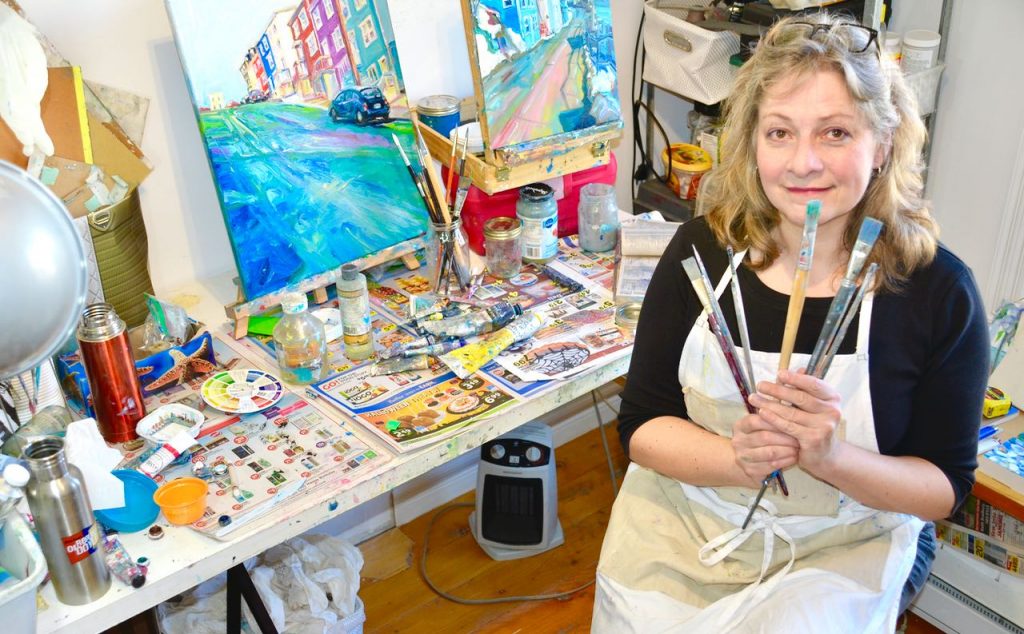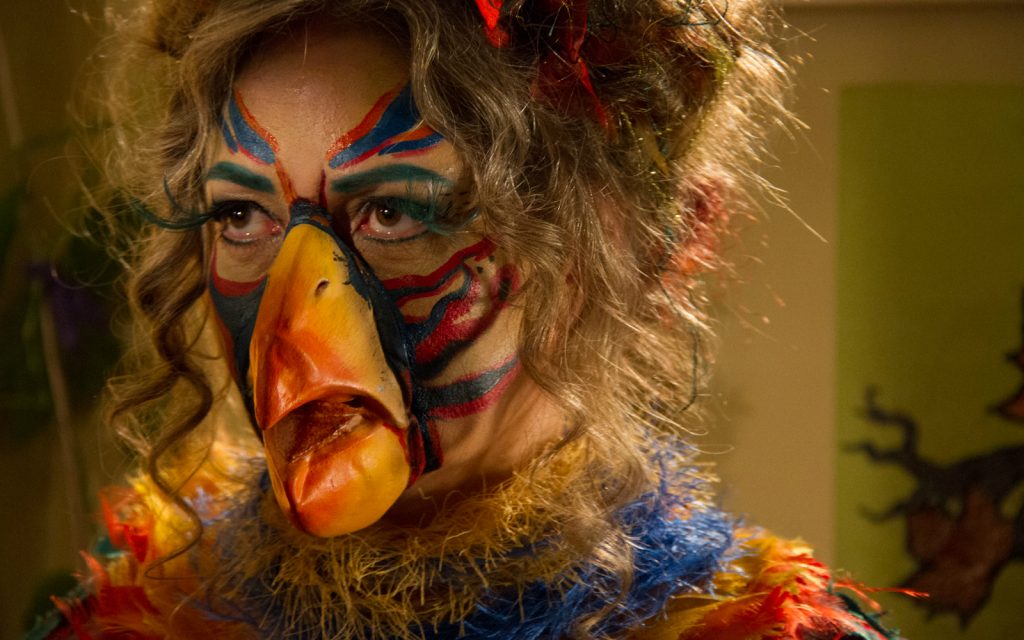artist. storyteller. scamp*

Multidisciplinary Canadian artist, Irene Duma has only recently turned to painting, one of her earliest loves. A contemporary impressionist, her landscapes, cityscapes, and portraits delight the eye with bold, energetic brushstrokes and rich vibrant colour.
Born and raised in Toronto, she moved to St. John’s, Newfoundland in 2008 for “a grand adventure.” Here on this island at the edge of the world surrounded by the cold North Atlantic, she paints out of her 108-year-old “jelly bean” row house, and tries to fill the house with laughter, music, food, friends and pets.
When not painting, Irene works on her other favourite things: films, acting and comedy, and writing. She studied and performed improv and sketch comedy in Toronto for years, and went on to study the Pochinko method of clowning (that’s the scamp part – see below for a definition). She firmly believes that her understanding of each of these art forms enriches all her work. They also make life
Irene has a Fine Art History degree from the University of Toronto, and studied drawing and illustration at Parsons School of Design in NYC. She regularly attends workshops, online and offline, from talented painters and teachers.
Exhibitions
Arts and Letters Awards, The Rooms, 2019
Spring Splash, at Red Ochre Gallery, 2019
NL Art Expo, group show at the Arts and Culture Centre
Open Doors, Soloman’s Path, 2018
Soloman’s Path Art Jam, group show, 2018
Little Things, Baccalieu Gallery juried group show, 2018
Salvage, Woody Point Writer’s Festival, juried group show, 2017
Press
Newfoundland Herald, as part of Experience Art show at the Red Ochre Gallery, December 30 – Jan 5, 2019
Paper Mill Press: A Journal of Creative Arts, cover of 2018 issue, and interior images
Newfoundland Quarterly online, Making the East Coast Trail, 2018
Artist Statement
I paint because:
1) I love paint: colourful, gushy paint is a joy to play with.
2) I love painting: the act of painting itself fires neurons and actually brings joy to the brain.
3) it trains me to really see things: shapes, form, colour, movement – it’s a whole beautiful world out there.
4) I want to delight people through their sense of vision: to help them see things they might have missed.
*Why Scamp?
I use the word scamp as in Lin Yutangs™ description from his 1937 book, “The Importance of Living.” I picked this up at a garage sale when I was studying the Pochinko method of stage clowning and was blown away by this description: it explains the purpose of clowning perfectly.
In this present age of threats to democracy and individual liberty, probably only the scamp and the spirit of the scamp alone will save us from being lost in serially numbered units in the masses of disciplined, obedient, regimented and uniformed coolies. The scamp will be the last and most formidable enemy of dictatorships. He will be the champion of human dignity and individual freedom, and will be the last to be conquered. All modern civilization depends entirely upon him.”
Why I love clowning. The clown is a form of masked theatre, with the red nose being a small mask. Every culture in the world has clowns – think tricksters, court jesters, Charlie Chaplin and Lucille Ball.
By clowning, the performer helps people to see themselves as they are “from all angles.” When done well, people will laugh at their follies, take themselves less seriously, and see that they are “a joke of the gods.” This is especially true for leaders in power: if your leaders allow “court jesters” to perform freely, and can laugh at themselves, you’re probably in a healthy culture. If comedians (and other writers, journalists, artists, and intellectuals) are being harassed/censored or worse by the government, then it’s a big uh oh. Always remember, bring on the clowns!

Me clowning around as a Birdmom in Martine Blue’s short film, The Perfect Family.